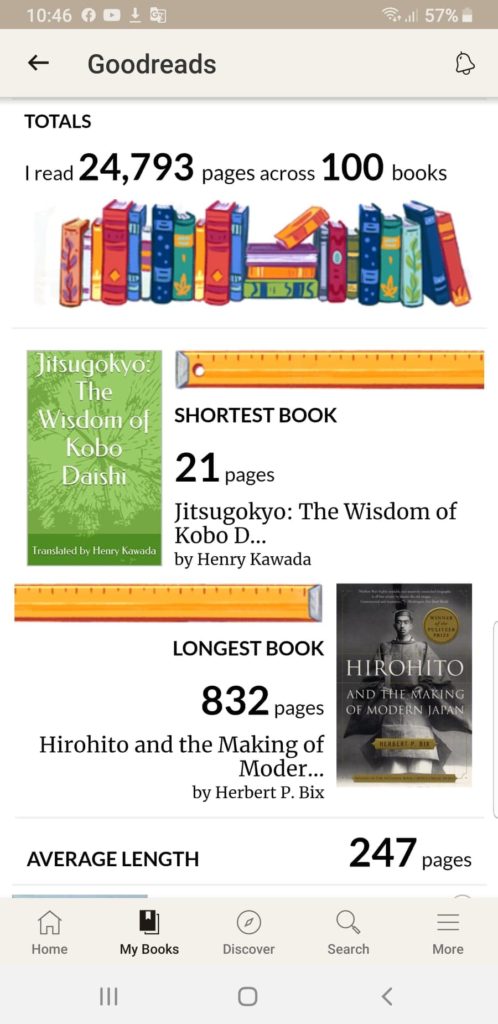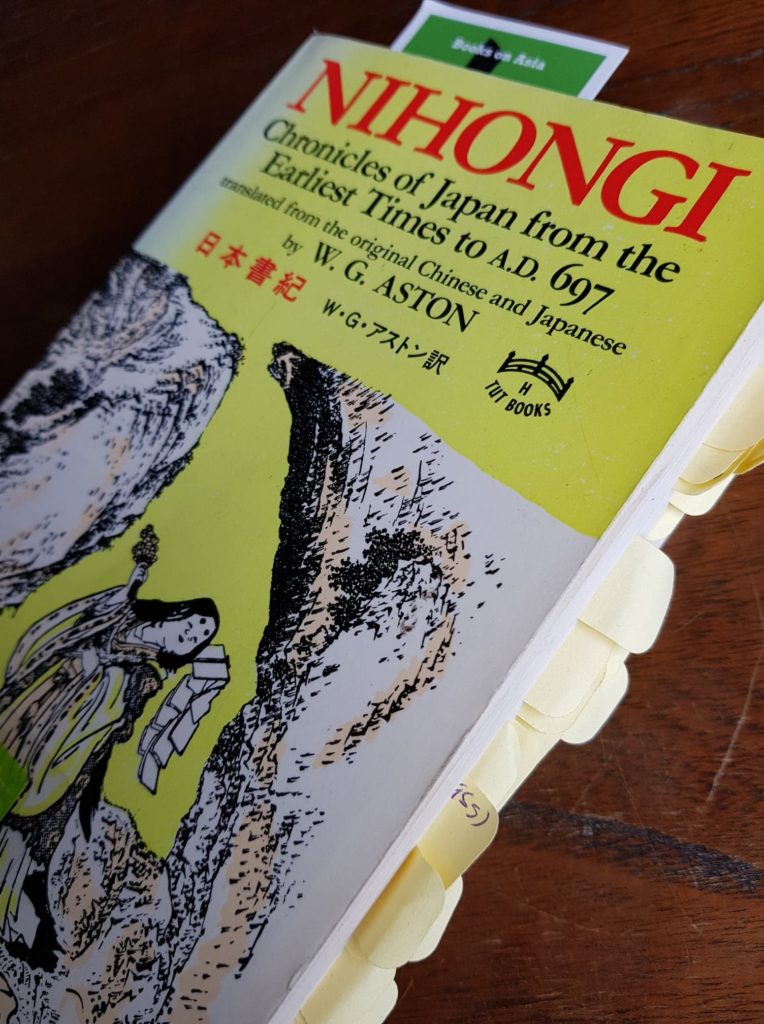By Amy Chavez

I’ve read 84 books so far this year. According to my Goodreads “Reading Challenge,” I’m 15 books ahead of schedule, so I’m well on my way to hitting the 100 mark. In fact, I’ll probably surpass it. How did I go from reading 5 to 10 books a year to reading over 100? It was easier than I thought, especially considering that I am not a fast reader. In fact, I take pride in being a slow, careful reader.
Before I share my easily implemented strategies to read more books, I want to discuss why it’s a good idea to read more, and in particular why one might want to set the bar rather high.
For me, knowing I have one hundred books to choose from over twelve months means I am no longer limiting myself to a few must-read books each year. Let’s say, for example, that you have to read texts for work or to keep up with your profession. That leaves very little time for leisure reading. But imagine if you could add novels, biographies, short-stories, classics and best-sellers to the mix. And consider how, if you spent more time reading, your views and biases might change because you could peruse books you wouldn’t normally even consider? Reading isn’t just about increasing knowledge, it should include expanding your horizons and gaining perspective on the world we live in.
At the moment, for example, people are “getting back to books” with the Black Lives Matter movement. While reading newspaper articles, op-eds and essays brings the topic to awareness, none can go into the depth needed to understand all the issues. So many people are turning to the best-sellers on the topic such as How to be an Anti-Racist, and So You Want to Talk about Race. Books give much needed, and desired, perspective. So next time, when you know you’re not getting the whole story, be proactive and turn to books that give a more balanced treatment of the subject.
The Elephant in the Room: Time
There are already so many demands on your time, so where is this magic reading time going to come from?
The good news is that you don’t need any more time than that premium free time you already have. Consider how much time you spend per day reading newspaper articles, Facebook posts, emails, newsletters, etc. You’ll probably find that you are in fact already spending a few hours reading. You’re likely spending a few minutes watching videos on YouTube or the odd program on TV too. Or perhaps you play video games? Rather than trying to find more free time, try shifting your screen time to include more books than anything else.
Next, add these 5 tricks to your reading time:
1. Read e-books
If you’re one of those people who prefers the feel of a print book, I can assure you that those who choose digital books agree that there’s nothing quite like the feel of a real book. But reading isn’t all about print books anymore. The attractiveness of ebooks is not how they feel, but that they give you more of a chance to read and more options for absorbing information.
Apps are available now to allow you to inspect digital books on your phone so you can read anywhere, anytime. Both ebook readers and reading apps for your mobile allow you to adjust the font size, underline words and passages, and take notes. An additional bonus is the built in dictionary: just highlight any word and the definition pops up. I find the best reading experience is a balance of both e-book and print. Novels I tend to read in digital, while reserving print for poetry and non-fiction.
And once you start reading more, you’ll soon find that you physically do not have the space to keep so many paperbacks. That’s when you’ll really start appreciating e-books that take up minimal space in a digital library. You can also take that entire library with you when you travel or commute.
Should you dare to become a voracious reader, you’ll also find that ebooks are necessary to keep reading affordable. Digital books are generally much cheaper than physical books. Popular ebooks are regularly put on sale and discounted to just a few dollars or less.
2. Listen to Audio books
If you already listen to music or podcasts on your phone, then you’re accustomed to finding time to listen: while exercising, driving, commuting, gardening, walking the dog, doing mundane house chores or while out running errands. Audio books fit well into these time slots. Besides, it’s nice to give the eyes a break now and then while still allowing the brain to engage.
For a couple years I’ve had a subscription to Audible, where for $US15.00 per month, I can listen to an audio book of my choice. Audible uses professional narrators who are more like voice actors. For Japanese literature, my favorite reader is Brian Nishii, but you’ll soon discover your own faves! You can bookmark audio books and write notes just like you can with e-books, too. I tend to dedicate longer tomes to the audio format because the narrators are usually very engaging (some audio books even include sound effects). Tip: increase the listening speed slightly to 1.3x of 1.5x for light novels and easy-to-process material and you’ll get through them faster. Set the sleep timer if you’d like to be read to sleep by Mr. Nishii.


If you find you’re having a hard time getting through a book, put it down and choose something else. Time is too precious to waste on content that doesn’t entertain, enlighten, or educate.
If you find you’re burnt out on books, maybe it’s a genre thing. Switch to something light, like a Murakami novel where you can just sit back and enjoy the adventure of magical realism. Try including short books in your repertoire too! Red Circle Minis are a series of very short novellas in English written by mostly Japanese authors. Penguin Specials are meant to be read in one sitting. There are plenty of classics that practice the art of brevity too like The Book of Tea by Okakura Tenshin (150 pages) and Jun’ichi Tanizaki’s In Praise of Shadows (102 pages). When you want to slow the pace of time and savor beautiful words and phrases, dip into Matsuo Bashō’s travel diary The Narrow Road to the Deep North or Saigyo’s Poems of a Mountain Home. Not only will you find time for reflection, you can be assured you’ll finish the book that week!

3. Use the Library
I’m a patron of a public library in Japan, where I can check out up to 10 books for two weeks. Having a deadline provides an incentive to finish books. As long as no one else has placed a hold on the title, I can extend the loan by another two weeks for a total of one month.

4. Borrow books from friends
You likely have friends who share the same interests as you when it comes to authors, topics and genres. They’re also bound to share their own recommendations. Borrowing books from friends not only provides an incentive to return them in a timely manner but you’ll have someone to provoke discussion with when you’re finished, which is one of the many joys of reading. Furthermore, you’ll likely be surprised at what is casually resting on friends’ shelves: first editions, rare books and those that have long been out of print! You’re bound to discover some gems.

5. Join Goodreads or a Book Club
If you haven’t already, join Goodreads (and friend Books on Asia!) or a book club. These communities of bibliophiles will inspire you to not only read, but to share your opinions and reading experiences with others. On Goodreads you can see what your friends are reading and recommending. Here you can also make your reading goal for the year and keep track of the books you want to read as well as those you’ve finished. You’re also welcome to share your views and reviews.
Lastly, if you think you’re “too busy to read,” don’t presume you’re the only one who is busy. Look around and you’ll see other busy people getting in their reading time: that girl at Starbucks reading a book while drinking her coffee; that guy on the train engrossed in his cell-phone ebook app; someone staring into an ebook reader while waiting for a friend at the station. Or maybe that’s you!
Remember, reading should be fun. It shouldn’t be about how many books you read per year, but about how many hours you spend engrossed in being a happy bibliomaniac!
